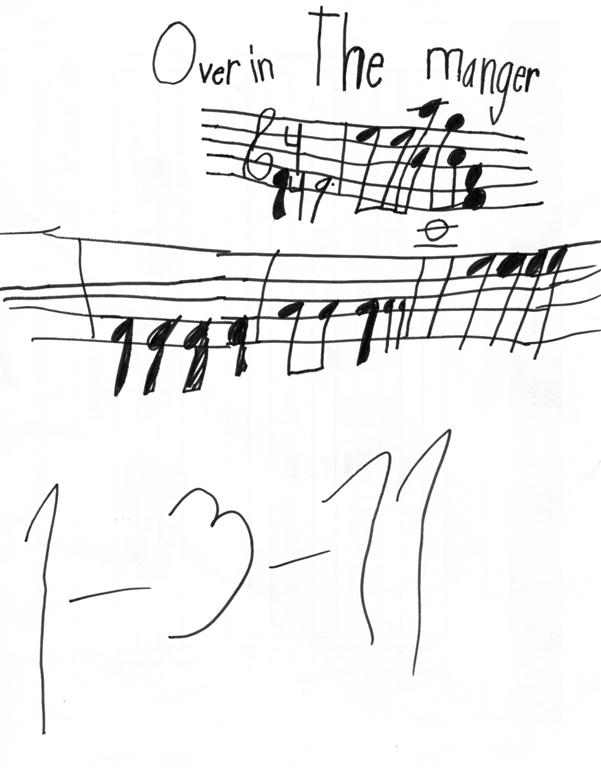The past few days have been rough, and it’s been wearing me down enough that I’m actually starting to think halfway seriously about switching M to the violin, which she’s said she would prefer to play. But that’s another post!
I expected more of the same today, for two reasons: (1) M is still a little sick (running a fever), and (2) today is M’s birthday. I expected some whining about how she shouldn’t have to practice on her birthday. I did make a special effort yesterday to tell M that we would practice today, but I didn’t think that would totally preempt protest.
Yet it did. When I said at 4:30 it was time to practice, she came right in, even a little cheerfully. She brought with her the two new “Chinese Barbies” (Mei Ling – Lotus Dancer and Black Turtle) she got for her birthday, which she proposed to earn during the lesson depending on how well she did.
We started out easy, by reading a new piece of music: one part of an arrangement of the Twinkle theme that her studio teacher plans to have her students play at the year-end recital in May. Here’s the part:
We approached it in steps:
- Clapped the rhythm using fruit names.
- Said the note names without worrying about rhythm. (Weirdly, M had a problem with E on the first line of the staff. I had her practice “E-E-E-E,” pointing at all four of them, several times.)
- Said the note names with the right rhythm.
- Played the A section together.
- She played the Twinkle theme while I played this part, to give her an idea of what they sound like together.
Next we worked on the Bach Tanz — specifically, on the same 2-measure portion we worked on yesterday, which requires use of the A (ring) finger on the right hand for the first time in the repertoire. She did 10 good repetitions, twice the 5 we did yesterday. I sat in front of her checking her hand position carefully. A couple of times, when she brought her attention fully to the right hand, she really did a great job. We still need to eradicate a bad habit, though (twisting her hand to start the second measure, which puts her in position to play using the wrong side of her middle finger).
She also still isn’t careful enough with the left hand — she often starts playing when it’s out of position (one string over, for instance). I was able to get her to laugh about it, though, which seems good.
Next we played Meadow Minuet twice through, once with her on melody and me on bass, and once reversed. When she played the melody, she made a lot of errors in the B section that she corrected as she played. When she finished, I asked: “Which section did you make the most mistakes in?” She answered, without hesitating, “The B section,” which is progress.
To finish with something fun, I played a chord progression in the key of G while M improvised on the G scale. She does a nice job of this, and while it doesn’t improve her technique, if it gets her excited and thinking musically, it’s worth it.
I then told her a little about the chord progression (a simple I-IV-V blues progression) and played more with some percussion (slapping the guitar top), and she danced around like a crazy person.
What a nice birthday present from M to me!
